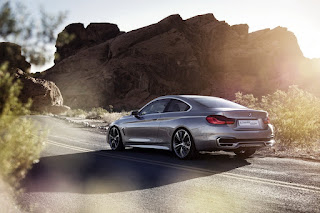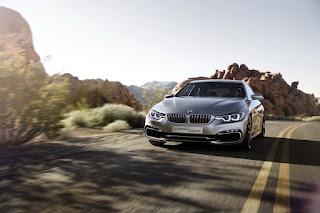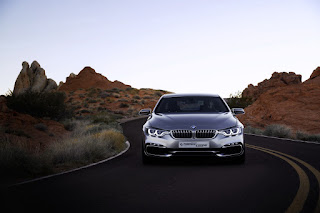The brand with the roundel logo says it ditched the 3-Series Coupe moniker in favor of the “4” because it wants to differentiate it from its compact saloon and at the same time, underline the new model’s stature in its line-up that will use even numbers for coupes (or four-door sports saloons in the case of the Gran Coupes).
The new 4-series measures 4,641 mm long, 1,826 mm wide and 1,362 mm tall, which means it’s longer (by 29 mm /1.1 inches), broader (by 44 mm /1.7 inches) and lower (by 16 mm / 0.6 inches) than the current 3-Series Coupe.
Compared to the model it will replace, it also boasts a 50 mm (2-inch) longer wheelbase that stands at 2,850 mm. Moreover, its 1,545 mm front and 1,593 mm rear tracks are 45 and 80 mm (1.8 and 3.1 inches) wider respectively.
The new coupe stays loyal to familiar BMW motifs like the long bonnet, setback cabin, minimal overhangs and long wheelbase. The front end is obviously similar to the F30 3-Series’ novel interpretation of the company’s hallmark kidney grille and twin circular headlights, with the main change being the large air intakes on the front bumper.
In its profile, the 4-Series retains the 3-Series “double swage line” (in BMW-talk), while the so-called "Air Breather", an aerodynamic aperture behind the front wheels, reduces drag around the wheels – which, in the case of the concept, are 20-inch multi-spoke alloys.
At the rear, the L-shaped taillights (another time-honored BMW tradition) resemble that of the 6-Series Gran Coupe and are set to the outer edges of the bodywork, while the rear arches are the widest point of the whole car, further emphasizing its wide and aggressive stance.
The design of the rear bumper is quite striking, mimicking the three-way split of the front bumper and incorporating the exhaust pipes in each of its outer edges – though it remains to be seen whether this will make it into the production car.
The interior is also production-ready, with the driver-centric dashboard being borrowed straight from the 3-Series Sedan and Touring models. Of course, the doors are longer than the saloon’s and their trim panels converge, according to BMW, via the B-pillar into the rear connecting the two passenger compartments.
BMW doesn’t mention powertrains, but when the production model is launched, probably at the 2013 Frankfurt Motor Show (unless they surprise us earlier, that is…) it will be powered by the company’s new generation TwinPower units, with the range-topping M4 switching from a naturally aspirated V8 to a turbocharged in-line six.
























































0 comments:
Post a Comment